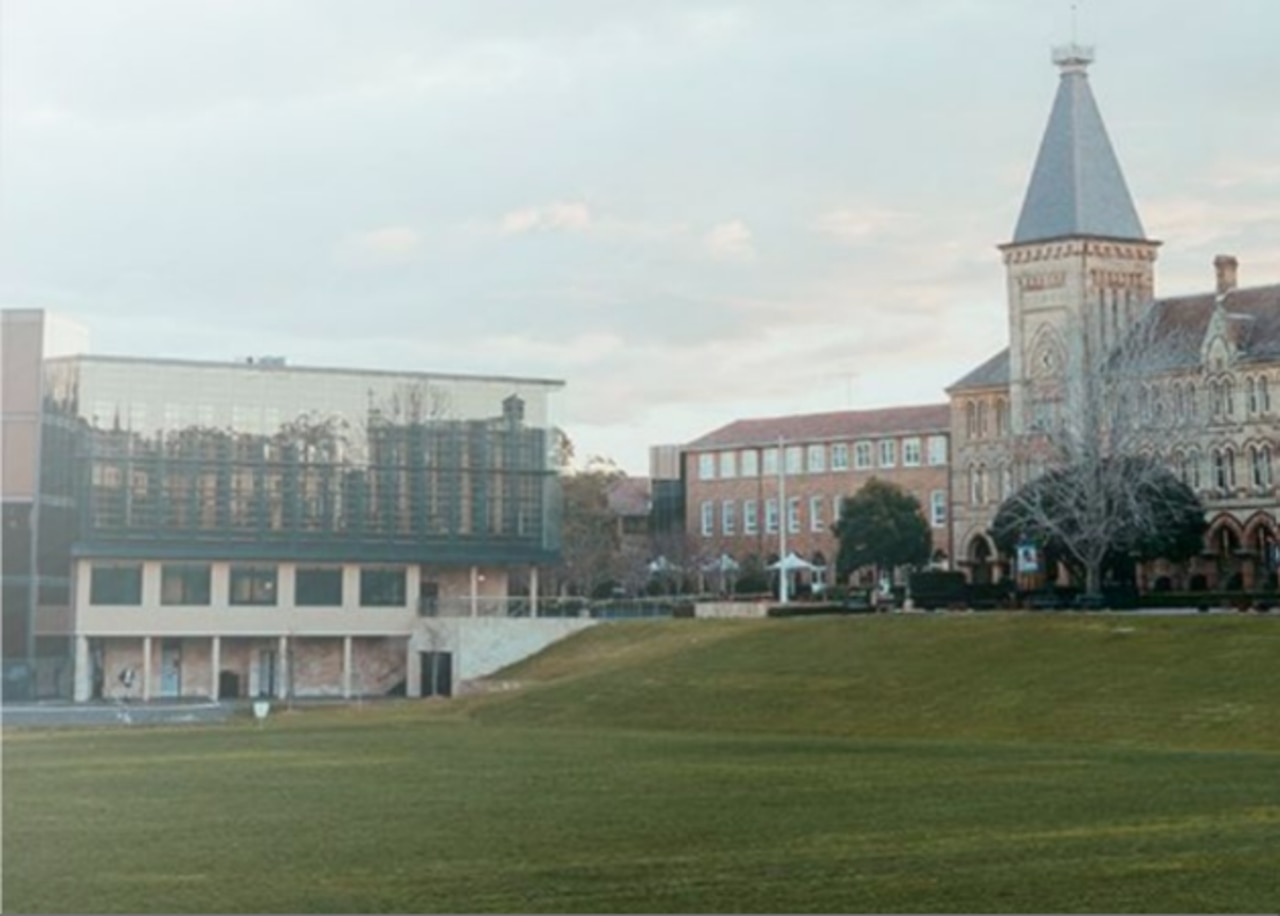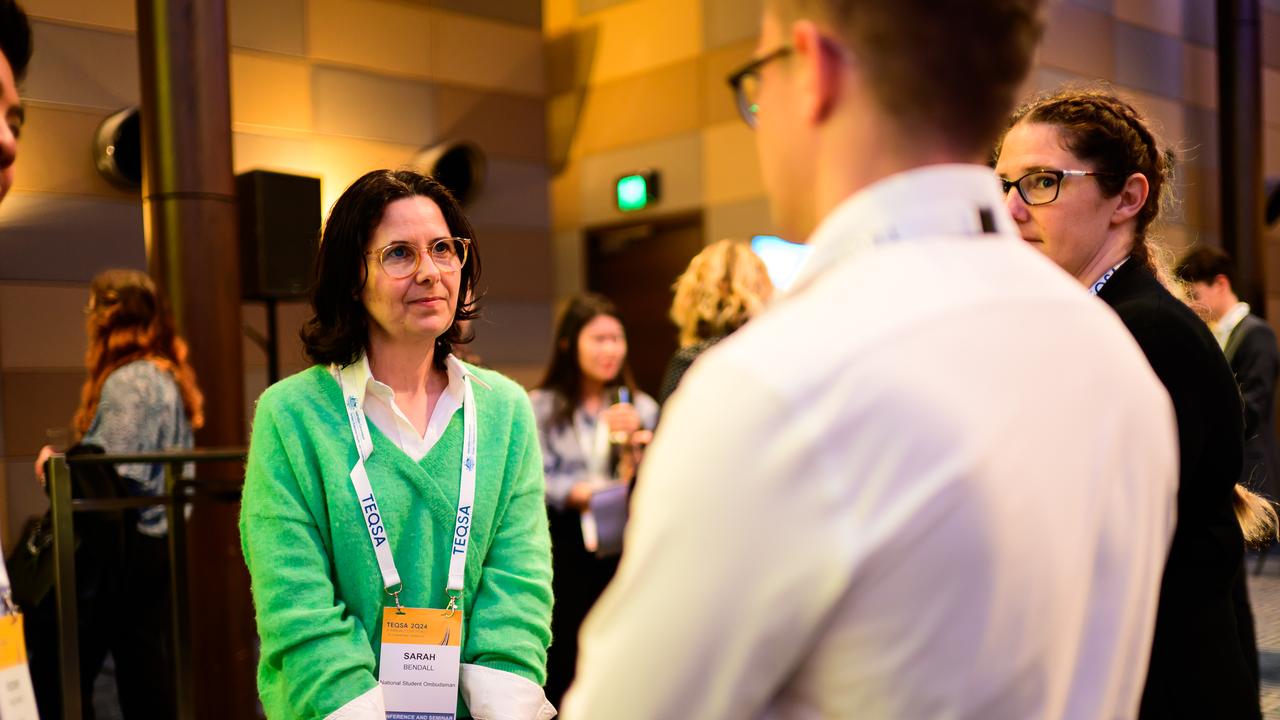Girls are often outperforming boys in school, topping two-thirds of Year 12 subjects in NSW
Anyone in doubt over the enormous strides that girls have made in education, need only take a glance at the Year 12 honour rolls from last year.

Anyone still in doubt over the enormous strides that girls have made in education over the past few decades, need only take a glance at the Year 12 honour rolls from last year.
They will see the names Lucy and Bella as well as Zoe, Emma, Phoebe. Also Georgia, Madison, Hannah and Grace.
In fact, in NSW in 2018, two-thirds of Year 12 subjects were topped by girls, including several science and mathematics subjects that not so long ago were considered typically “male subjects”.
Preliminary HSC results show that girls achieved a higher average Australian Tertiary Admission Rank (ATAR) than boys, at 71.10 compared to 67.80.
Since the endorsement of Australia’s first national policy for the education of girls in schools in 1987, there has been significant interest in and awareness of the educational needs of girls, and, not surprisingly, performance. While girls outperforming boys started dominating the headlines from the mid-1990s, there is evidence that from the time that girls were first permitted to sit the high school matriculation exams in the 1880s, they were holding their own.
“The neuroscience is quite clear, there’s no so-called pink brain or blue brain,” says Loren Bridge, executive director of the Alliance of Girls Schools Australasia. “Any differences [in academic achievement] usually come down to the learning environment and any gender biases they bring.”
Despite this widespread acknowledgement of the damage that stereotypes can reap – for boys as well as girls – attainment gaps between the genders persist.
Data collected via NAPLAN shows that girls outperform boys in most categories, from Year 3 onwards, recording higher mean scores for reading, writing, spelling and grammar and punctuation.
However, boys come out ahead in numeracy.
Science isn’t assessed annually, however sample testing conducted in 2015 revealed that Year 6 girls, for the first time, were performing significantly better than their male counterparts. They were also reporting strong interest in learning new things in science and doing science-based activities.
Yet, by the time girls reach their senior secondary years, many have given up on the subject, as well as maths. Girls are currently outnumbered four-to-one in senior physics classes and almost 2 to one in advanced maths. It is hardly surprising that women make up just 16 per cent of university science, technology, engineering and maths, also known as STEM, graduates.
Girls shunning maths ‘shut out of jobs’
The Office of the Chief Scientist has done extensive work in bid to bust the myths that are blamed for holding girls back from STEM careers, including that “girls are bad at maths”. Having analysed scientific literature from across the world it found that girls outperformed boys in mathematics in 13 countries, compared to seven countries where boys outperformed girls. It concluded that there was “no innate difference in mathematics ability”.
Another myth that does the rounds is the claim that women are “disinterested” in the fields of engineering physics. Yet, according to the Chief Scientist, women’s participation in these domains increases in “inclusive cultural environments”. Women actually account for 40 per cent of engineers in China and 44 per cent of engineering graduates in Malaysia. Here, just 14 per cent of engineers are women.
Nicolette Rubinsztein, incoming president of the Actuaries Institute, is concerned about the high numbers of girls that bleed out of the maths pipeline throughout school and its impact on her profession.
Advanced mathematics is a traditional springboard for those who go into the in-demand and well-remunerated career path. Yet only 38 per cent of advanced maths students at school are girls. So Rubinsztein set out to find out why. She will discuss her research at a presidential address scheduled for International Women’s Day.
“To be honest when I started my research I didn’t know what the reason was: whether it was that boys were simply better at maths or whether it was down to the glass ceiling,” she says.
“But I think the two key issues are it comes down to self-confidence, lack of it, and that culturally we just aren’t encouraging girls to do mathematics.”
Rubinsztein believes girls were picking up subliminal messages about their ability to excel at maths from a very young age.
“It can be mum saying, ‘wait for dad to get home to help with your maths homework’ or ‘don’t worry darling, I was never good at maths either’.
“Gender stereotypes about intellectual ability emerge early. Five year old girls are just as likely to say as boys that they are really, really smart, but from six years up they think brilliance is much more likely to boys.”
She would like to see more parents challenge their daughters if they reveal that they are considering dropping maths or science, or scaling back from an advanced-level subject: “Is it a confidence issue? Because if it is, then that’s an opportunity to encourage them and help them through any doubts they might be having”.
Caitlin Abood, a first-year student at the University of Sydney, describes herself as studious, drawn to logic and a keen problem solver. Still, as a primary school student, she struggled with mathematics and recalls thinking to herself “if I can’t be good at maths, I will just find something else I’m good at”.
Fortunately, her mother was having none of that, and urged her to try a little harder, to practice a little longer, that she’d “get it” in the end.
And she was right. “I took it as a challenge, I guess, and I grew to like maths,” the 18-year-old says. “And by my senior secondary years I found I really excelled at it.”
Her single-sex secondary school, Catherine McAuley, Westmead, also happened to take seriously its role in promoting to girls to careers that they may never have considered 30 years ago and would invite professionals in science, maths and technology fields to be come to talk to the students about their work.
“It was actually through having a guest speaker come and talk about engineering that I came to realise that that’s what I wanted to pursue,” the 18 year old says.
Having achieved a distinguished achiever in all of her HSC subjects –- economics, advanced English, mathematics and mathematics extension, physics and religion -- she is now enrolled in a double science and engineering degree.
Caitlin says she never felt that gender was an obstacle.
“I feel quite empowered actually, I’m involved in the women in engineering society on campus, which is obviously for women, and also Engineers Beyond Borders, which is mixed.
“I think the main barrier for girls is not necessarily an institutional barrier, but a mindset barrier, because in my course I feel like everyone else.”
Catherine McAuley’s careers advisor Amanda Chahine said careers education at the school had evolved to include more “real world insight” by inviting speakers from industry to share their career experiences.
The school has recently connected with the Westmead Institute for Medical Research and been able to draw upon various health professionals and researchers to be part of its careers speaker program.
“I think it is very important to expose the girls to broad career options,” Mrs Chahine said. “We enable our girls to go to the science outreach events at universities, to the Girls in Engineering exploration days and so there are plenty of careers events on offer to girls which our students are keen on.”
And it seems to be working.
“Our 2018 Destination survey results show that 25 per cent are entering STEM degrees -- not including health,” Mrs Chaine says. “I think the message is reaching parents that STEM careers are going to dominate the future and most will encourage their daughter’s choices.”
Loren Bridge believes that girls schools have an advantage when it comes to “normalising” the study of science and maths. Girls look at their peers and see that it’s normal for them to study these subjects, while they see many older students and alumni of their school go on to study and have careers in STEM fields, she says.
Bridge points to recent research from UCLA in the US showing that graduates of single-sex girls schools were more likely to have higher levels of science self-confidence, while recent data out of Monash University showed that girls were 85 per cent more likely to study extension or advanced maths or science if they attended an all-girls school.
“It’s promising,” she says, while cautioning that educators cannot be complacent when it comes to challenging stereotypes that hold girls back.
“I do think that it’s really important that we do continue to explain to girls about the gendered nature of the world and workplace they’ll be going into, particularly girls in co-ed schools, to give them the confidence to take on those male-dominated areas, because that’s where the jobs of the future are going to be.”


